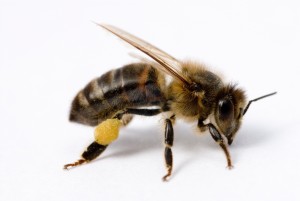Europe debates risk to bees (original) (raw)
Proposed pesticide ban gathers scientific support as some experts call for more field studies.

Credit: Mark Bowler / naturepl.com
Across the globe, hives of honeybees are dying off in a phenomenon known as colony collapse disorder. Among the proposed culprits are pesticides called neonicotinoids, which are supposed to be less harmful to beneficial insects and mammals than the previous generation of chemicals.
Debate over neonicotinoids has become fierce. Conservation groups and politicians in the United Kingdom and Europe have called for a ban on their use, but agricultural organizations have said that farmers will face hardship if that happens. Next Monday, European governments will take a crucial vote on whether to severely restrict or ban three neonicotinoids.
Scientists, meanwhile, are vigorously debating whether the studies on neonicotinoids and the health of honeybees and bumblebees, mostly conducted in laboratory settings, accurately reflect what is happening to bees in the field.
Neonicotinoids, which poison insects by binding to receptors in their nervous systems, have been in use since the late 1990s. They are applied to crop seeds such as maize (corn) and soya beans, and permeate the plants, protecting them from insect pests. But a growing body of research suggests that sublethal exposure to the pesticides in nectar and pollen may be harming bees too — by disrupting their ability to gather pollen, return to their hives and reproduce1,2,3,[4](/articles/496408a#ref-CR4 "Williamson, S. M. & Wright, G. A. J. Exp. Biol. http://doi.org/k2z
(2013)."),[5](/articles/496408a#ref-CR5 "Palmer, M. J. et al. Nature Commun. 4, 1634 (2013)."),[6](/articles/496408a#ref-CR6 "Thompson, H. et al. Effects of Neonicotinoid Seed Treatments on Bumble Bee Colonies Under Field Conditions (Food and Environment Research Agency, 2013).") (see ‘The buzz over bee health’).In January, the European Food Safety Authority in Parma, Italy, Europe’s food-chain risk-assessment body, concluded that three commonly used neonicotinoids — clothianidin, imidacloprid and thiamethoxam — should not be used where they might end up in crops that attract bees, such as oilseed rape and maize. The European Commission then proposed a two-year ban on the use of these chemicals in such crops. That proposal failed to gain sufficient support last month in a vote by European Union member states, but on 29 April, ministers will vote again.
Some scientists say that there is insufficient evidence to implicate these compounds. Ecotoxicologist James Cresswell, who studies pollination at the University of Exeter, UK, says that “one can still equivocate over the evidence” because many of the lab studies that have shown harm may have fed bees unrealistically high doses of neonicotinoids. The problem, he adds, is that data are lacking on what doses bees actually encounter in the field. “Everyone is focused on hazard,” he says. “We know there is hazard there. But risk is a product of hazard and exposure.”
However, David Goulson, a bee researcher at the University of Sussex, UK, thinks that most of the major studies have used realistic doses. “I couldn’t say I am certain these impacts really occur in the field, but it seems to me very likely that they do,” he says.
Even if neonicotinoids are not directly responsible for colony collapse disorder, they could play a part by making bees more susceptible to the parasitic mite Varroa destructor and the parasitic fungus Nosema apis, both prime suspects, adds Christian Krupke, an entomologist at Purdue University in West Lafayette, Indiana. He says that, on the basis of current evidence, neonicotinoid use should be restricted immediately as a precaution.
One of the few studies to be conducted in the field served only to stoke the controversy after its release in March6. Conducted by an agency within the UK Department for Environment, Food and Rural Affairs (DEFRA), it exposed 20 bumblebee colonies at three sites to crops grown from untreated, clothianidin-treated or imidacloprid-treated seeds. It found “no clear consistent relationships” between pesticide levels and harm to the insects.
DEFRA also reviewed the body of evidence on neonicotinoids and concluded that, although there might be “rare effects of neonicotinoids on bees in the field”, these do not occur under normal circumstances.
Experts lined up to criticize the field study. Neuroscientist Christopher Connolly of the University of Dundee, UK, who has studied the effect of neonicotinoids in bee brains, says that the control colonies themselves were contaminated with the pesticides, and that thiamethoxam was detected in two of the three bee groups tested, even though it was not used in the experiment. Goulson agrees, saying of the study:“In many ways, it was appalling.” No one from DEFRA was available to talk to Nature.
Goulson and others say that intensive environmental monitoring of neonicotinoids and long-term field studies of their effects are sorely needed. He points to a 2012 study7 that found neonicotinoids in dandelions growing near treated crops, suggesting that the pesticides can spread from their intended target. “This debate has focused very heavily on bees. Perhaps we’re missing a slightly bigger picture,” he says. “For 20 years we’ve been using neonicotinoids without really assessing what impact they might be having in the wider environment.”